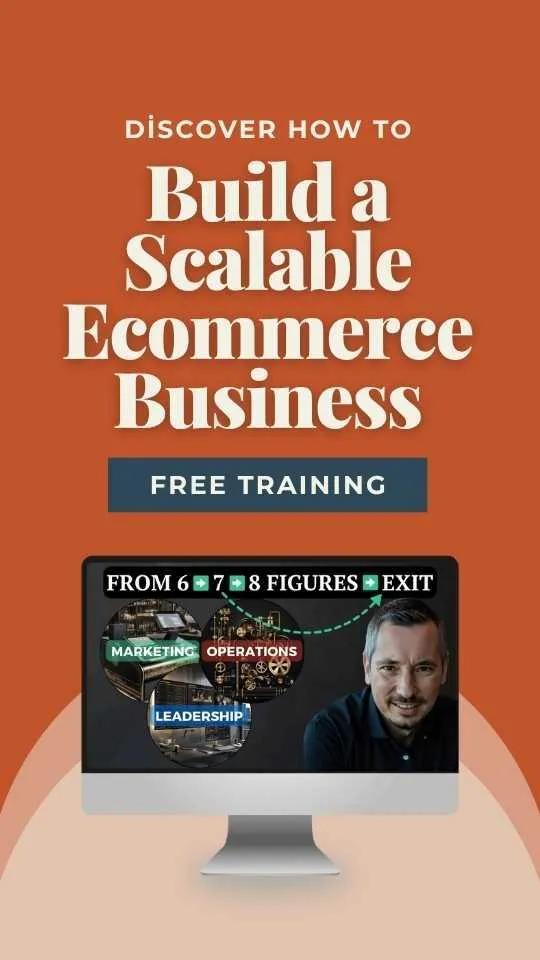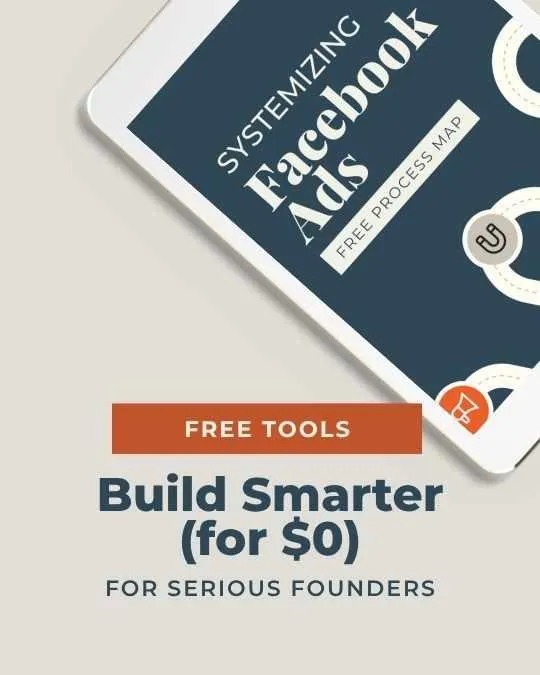How to Overcome Sales Objections for Explosive eCommerce Growth
Sales objections are like speed bumps on an eCommerce highway. They slow you down but don't have to stop you. Knowing how to handle objections can turn these obstacles into growth opportunities for your store.
Your customers might say, "It's too expensive" or "I already have a subscription." These aren't dead-ends; they’re chances to show the value of your products and clinch the sale.
Tactics like offering discounts, highlighting unique features, or showing positive reviews can change their mind.
Being prepared is key. By anticipating common objections, you can engage confidently with customers and guide them toward a purchase. You become not just a seller but also a solution provider.
Key Takeaways
Prepare by understanding common objections.
Engage proactively to handle concerns.
Use effective techniques to close deals.
Understanding Sales Objections
Sales objections in eCommerce revolve around understanding why customers say "no." Breaking them down, you learn the psychology, various types, and common objections you may encounter in your store.
The Psychology Behind 'No'
When someone says "no," it’s more than just a word. It’s a protective shield. People’s brains are wired to avoid risks. Saying “no” helps them feel safe, dodging potential regrets.
Your job? Make saying “yes” safe. Show them benefits far outweigh risks. Build trust. Remove doubt. Address fear of loss. Trust is key. The moment a buyer trusts you, "no" becomes "maybe" and eventually "yes." Understand this and you’re halfway there.
Types of Sales Objections
Sales objections come in flavors. Four main types: price, need, urgency, and trust.
Price is all about cost. Is it worth it? Need questions necessity. Do they really need this? Urgency deals with timing. Why now? Trust questions your reliability.
Tackle these with tailored responses. Know which type you face. That helps you conquer the objection quickly.
Common Sales Objections in eCommerce
eCommerce is ripe with objections. "It's too expensive" or "I can find it cheaper elsewhere" are common price objections. Others might say, "We don't need this product right now," signaling need-based objections.
Time objections like "We'd buy later" or trust issues like "Are you a reputable store?" are also frequent.
Ready to combat these? Make your value clear and undeniable. Leverage customer reviews. Offer guarantees. Highlight time-sensitive deals. The more you prepare, the easier it is to turn those "no"s into "yes"es.
Preparation Is Key
When you face sales objections, preparation is your secret weapon. Get ready to handle whatever your eCommerce customers throw your way by anticipating objections, crafting a strong value proposition, and mastering effective sales skills.
Anticipate Objections
Think like your customers. What might hold them back from buying? Write down a list of potential objections.
Address concerns about price, product fit, or competition right away. For example, if price is a common objection, prepare comparisons or discounts.
By thinking ahead, you can tackle issues before they even pop up.
Arm yourself with answers. Preparation translates to confidence, which wins sales. Keep refining your list as new objections arise, and stay one step ahead.
Craft Your Value Proposition
Your value proposition is what makes you stand out. It's your pitch that tells customers why your product is the best choice.
Think about what your product offers that others don’t. Is it faster, cheaper, or more reliable? List the benefits clearly.
Ask yourself: Why should they choose you? Build a compelling message around this. Highlight the unique value proposition with energy and clarity.
Make sure this is woven into every part of your sales process. A strong value proposition makes it easier to overcome objections because it addresses the core benefit upfront.
Effective Sales Training
Train your team to be superstars. Effective sales training means practice, feedback, and development. Your team should know your products and the objections like the back of their hands.
Run mock sessions. Use real-life scenarios where sales reps can practice handling tough questions. Focus on active listening—this isn’t just a script-reading exercise.
Equip them with tools to adapt and personalize their approach. A well-trained team can pivot when they face a surprise objection, turning a “no” into a “yes” with ease.
Engaging the Customer
Connecting with your customers is key to overcoming objections. You need to master the art of listening, ask smart questions, and build solid trust. Master these skills, and you’ll see your growth take off.
Master Active Listening
Active listening is where you tune into what your customer is really saying. You're not just waiting for your turn to talk. You catch the details, the emotions, the hidden concerns.
Show you’re listening by nodding, repeating back key points, and asking clarifying questions. Don’t just hear them—understand them.
When customers feel heard, they open up. They tell you more about their needs. This isn't just about hearing words; it's about connecting on a deeper level. Dive into their world and you’ll find those golden insights to seal the deal.
Ask the Right Questions
Questions can make or break a sales conversation. Ask open-ended questions to draw out more than a yes or no. "What’s your biggest challenge right now?" or "How do you decide on purchases like this?" These questions dig deep.
You want to identify problems they might not even know they have. With the right questions, you uncover what drives them. Listen closely to their answers. Every response is a piece of the puzzle. Show genuine interest, and your customers will feel it. They'll trust you more.
Building Trust Through Conversation
Trust is your secret weapon. Build it, and overcoming objections gets way easier.
Start by being honest and transparent. If you don't know something, admit it. No one trusts a know-it-all.
Keep the conversation real and relaxed. Share stories and testimonials that relate to their challenges. Highlight how your product has helped others.
If your customer senses any lack of trust, you’re done. Trust takes time, but each convo is a chance to strengthen the bond.
Address concerns openly. When customers believe you’re there to help and not just to sell, they lean in. Trust opens the door to more possibilities.
Tackling Common Concerns Head-On
When running an eCommerce store, you'll face objections. They are part of the game. Understanding how to tackle these concerns is key to boosting growth. We’ll talk about price concerns, making sure customers see value, and strategies to spark urgency.
Price: It's Not Always About the Tag
When customers say, “It’s too expensive,” they're not just talking about the price. It’s often about value perception.
You need to show why your product is worth it.
Compare your product to others. Highlight unique features. Maybe your product lasts longer or saves time. Creating value makes price less of an issue.
Consider offering flexible payment options. This breaks the cost into manageable chunks. It can turn a hard "no" into an easy "yes."
Remember, it’s not just about dropping the price. It’s about raising the value.
Addressing ROI and Value for Money
Some customers worry about Return on Investment (ROI). They want to know if they're getting bang for their buck.
Be transparent. Share testimonials and case studies that show real results. This builds trust and showcases value for money.
Use numbers to your advantage. Show how your product saves time, increases efficiency, or cuts down costs over time. These are tangible benefits that scream value.
Offer them trials or guarantees. When they feel there’s less risk, they’re more likely to jump in. Show them that what they get is worth every dollar spent.
Strategies for Lack of Need and Urgency
Sometimes, they say they don’t need what you’re selling. Or that there’s no rush. Your job? Create the need and urgency.
Highlight problems they might face without your product. Be specific. Make it visual. Use stories or data that relate to their situation.
Create limited-time offers. It’ll light a fire under those fence-sitters. Scarcity can drive action like nothing else.
Educate them on why investing now prevents future headaches. Whether it’s saving money over time or avoiding potential issues, show them why waiting isn’t an option.
Bring these strategies together. Address common concerns clearly. Your customers will feel comfortable. And your store? It’ll grow like crazy.
Closing Tools and Techniques
To boost your eCommerce store’s growth, you need to close deals like a pro. Learn how to leverage social proof, utilize customer testimonials, and integrate innovative payment solutions. Mastering these tools can help you overcome sales objections with style and confidence.
Using Social Proof Effectively
Social proof is your secret weapon. Shoppers want reassurance, and nothing does that better than seeing others buy in.
Show off how many people have purchased from you. Use phrases like "Join thousands of satisfied customers."
Include real-time notifications of recent purchases or pop-ups of product ratings. This creates a sense of trust and urgency.
Tip: Encourage existing customers to share their experiences on social media. It multiplies your reach and solidifies your credibility. Use platforms where your target audience hangs out to maximize impact.
Leveraging Customer Testimonials
Customer testimonials are gold. They’re not just stories—they’re what win hearts and minds.
Display them prominently on your product pages. Make them specific and relatable to your buyers.
Video testimonials can be even more persuasive. Seeing real people talking about your product creates a personal connection.
Organize testimonials around the biggest objections customers have. If they’re worried about quality, share feedback that praises your product’s durability. Tailor to what potential buyers need reassurance about, and watch objections melt away.
Innovative Payment Solutions
Payment hurdles stop a lot of purchases. You’ve got to crush that obstacle.
Offer flexible payment options to meet various customer needs. Consider installment plans, which reduce the pressure of a big upfront payment.
Integrate digital wallets and local payment methods, too. Customers love convenience and familiarity.
Highlight these options during the checkout process to make decisions easier for the customer. It’s all about reducing friction. Make the payment process so smooth that there’s no reason not to buy. Simple as that.
Sealing the Deal
Closing a sale is not just about handling objections but also about connecting with your customers. Let's break down two key strategies that can help boost your eCommerce store’s conversion rates: follow-ups and empathy.
The Art of the Follow-Up
You think the deal's done? Nope. Follow-up can be the golden step to turning a prospect into a sale.
Imagine this: you’re in a restaurant, you’ve eaten, and the waiter never comes back with the check. Frustrating, right? Your customers need that follow-up.
Get timely. Send an email or give them a call. Be persistent, but not annoying. You’re not just bugging them, you're re-opening the door of opportunity.
If they expressed a lack of budget, your follow-up is the chance to reframe or offer a better fit. Don't shy away from being direct. Ask them where they stand.
Turn the tables. Try negative reverse selling; ask if they’re ready, implying it’s okay if they're not. This honesty can push them to reply with a yes. Your follow-up isn’t a nagging note—it's a friendly nudge. Get that sale back on track!
Empathy and Reassurance
People want to feel understood. Really understood. Tap into empathy. Put yourself in their shoes. This builds trust and strengthens your sales game.
When a customer feels valued, they drop their resistance.
Acknowledge their concerns. If they say your product doesn’t fit, reassure them by showing how it meets their needs.
Talk to them like you’re on their side, not across the table. Use your words wisely: “I get it,” “I’d feel the same,” “Here’s why this works.”
Reassurance isn’t just about solving issues. It’s about genuinely connecting.
Show them results through simple examples. Share stories of others who had the same concerns but found success.
Create a bridge from doubt to confidence. When they trust you, they’ll walk across that bridge to seal the deal.







